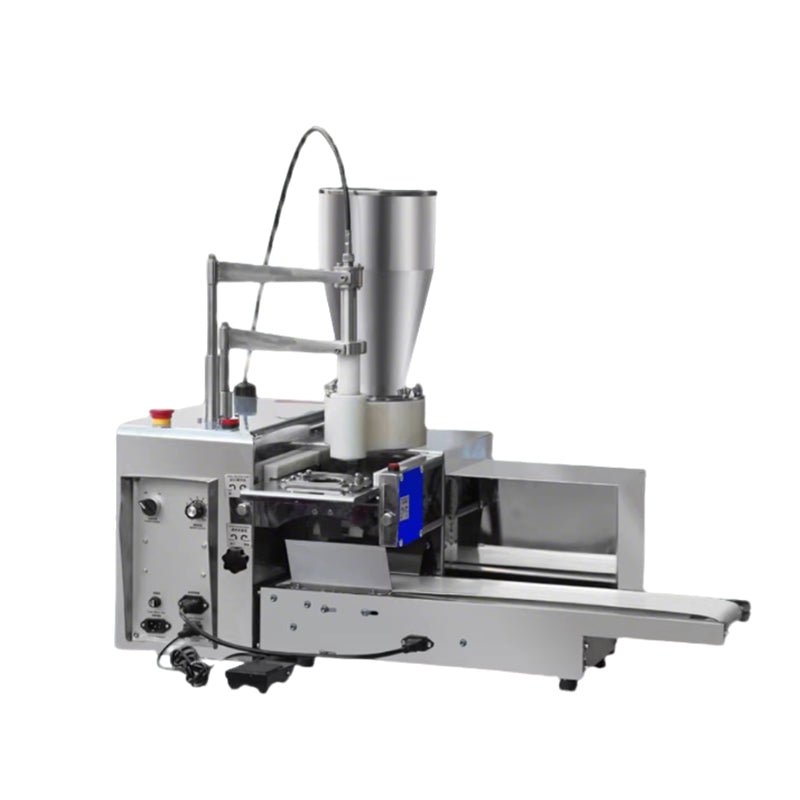
Kitchen's New Favorite: The Semi-Automatic Wonton/Dumpling
Share
Kitchen's New Favorite: The Semi-Automatic Wonton/Dumpling Maker – Frees Your Hands, But You Still Need to "Lay the Foundation"
Calling all food lovers who are "all thumbs" in the kitchen! Have you ever found yourself in this situation: watching family gather to wrap dumplings or wontons together, full of joy, while you're stuck just eating and washing dishes because your wraps are clumsy and slow? Or maybe you simply find hand-making them too inefficient? You want to make a big batch to freeze, but it leaves you aching all over.
Today, I'm sharing a "productivity powerhouse" for the kitchen – the Semi-Automatic Wonton/Dumpling Maker. It perfectly solves the problem of "wrapping," but please note, it has one important prerequisite: you need to prepare your own dough sheets.
1. What is a Semi-Automatic Wonton/Dumpling Maker?
As the name suggests, this is a "semi-automatic" machine. It is not like a fully automatic dumpling machine that handles everything from mixing dough, rolling skins, filling stuffing, to shaping in one go. Its workflow focuses more on the part we find most tedious – filling and shaping.
Think of it as a highly efficient, tireless "wrapper." You are only responsible for providing the "raw materials" (dough sheets and filling), and it can quickly produce delicate, uniform dumplings or wontons for you.
Its working principle is usually simple:
-
Place the Dough Sheet: Place your homemade or store-bought pre-made dough sheets onto the tray.
-
Add the Filling: Use a spoon or your finger to place the filling into the machine's filling chamber.
-
Press to Shape: Manually press down the operating lever (or push a button, depending on the model). The internal mold instantly completes the actions of "pressing," "cutting," and "sealing the edges."
-
Retrieve the Finished Product: A plump, beautifully crimped dumpling or wonton is born!
2. Why Do You Need to Make Your Own Dough? The Machine's "Limitation" and "Flexibility"
This is the core of its "semi-automatic" nature. It doesn't have a dough-rolling function, mainly for these reasons:
-
Cost and Complexity: Integrating dough mixing and rolling functions would make the machine structure extremely complex, bulky, and the price would increase exponentially. The semi-automatic design significantly reduces cost and the barrier to home use.
-
Dough Flexibility: Homemade dough is the soul of dumplings! The machine can't tell if you want green dough made with spinach juice, red dough from dragon fruit, or traditional white dough today. It also doesn't know if your family prefers thick, chewy Northern-style skins or thin, smooth Southern-style skins.
-
The Deciding Factor for Texture: The texture and toughness of hand-rolled dough sheets (especially those with thinner edges and slightly thicker centers) are often unmatched by mass-produced machine-made skins. Making your own dough allows you to fully control the softness and thickness of the dough, ensuring the best texture for the final product.
Therefore, this machine doesn't rob you of the joy of "participating in creating food." Instead, it perfectly divides the labor between what you're best at (creating flavor) and what you find troublesome (repetitive labor). You are the "Chief Designer" of the delicious food; it is your most efficient "Production Assistant."
3. What's It Like Using a Semi-Automatic Dumpling Maker?
Advantages:
-
Super High Efficiency: Once you get the hang of it, making dozens of dumplings per minute is not a dream. It's perfect for weekend meal prep—make hundreds at once to freeze, ready for quick and delicious meals anytime.
-
Uniform and Aesthetic Shape: Every dumpling made by the machine looks almost identical, uniform in size with neat crimping. A blessing for perfectionists! It looks very impressive when served to guests.
-
Tight Seal: Compared to handmade ones, the machine applies greater pressure, creating very secure seals. You almost never have to worry about them breaking open during cooking.
-
Simple Operation, Easy to Use: You can learn it just by reading the manual once. There's almost no learning curve.
Points to Note (Not really drawbacks, but characteristics):
-
Requires Homemade Dough Sheets: This is the prerequisite for using it. You need to have the necessary tools ready for mixing and rolling dough (bowl, rolling pin, or pasta machine).
-
Filling Moisture Content: The filling shouldn't be too wet (e.g., zucchini filling with too much water), as it might leak during pressing and affect the seal. Pay some attention to the filling preparation.
-
Cleaning Required: Like all kitchen appliances, cleaning after use is essential. Fortunately, the structure is usually not complex, and disassembly for washing is relatively easy.
4. Tips for Friends Considering Getting One
-
Pairing it with a pasta machine is a perfect combo! If you find hand-rolling skins still inefficient, consider getting a manual pasta machine. First, press large sheets of dough, then use the circular cutter that often comes with the dumpling maker to cut out standard-sized wrappers, and proceed directly to wrapping – full marks for smoothness!
-
For the first use, practice with dough. Don't start with real filling right away. Use a small piece of dough as "filling" for a test press to get familiar with the machine's operation and pressure.
-
Don't be greedy with the filling. The filling chamber of each model has a capacity limit. Overstuffing it will also affect the final product.
-
Pay attention to the molds when purchasing. Many machines come with multiple molds, such as for dumplings, wontons, or even specific shapes like for wonton soup (云吞 yuntun), enabling multiple uses for one machine.
Conclusion
The semi-automatic wonton/dumpling maker is a very practical small kitchen appliance that can significantly boost your happiness. It perfectly targets the pain points of manual making, using mechanics to solve the most time-consuming part: the wrapping.
It's not perfect because it leaves the step of "making dough sheets" – full of warmth and creativity – to you. But perhaps this is its cleverness: it doesn't let you completely disconnect from the process, preserving the warmth and sincerity of homemade food while providing convenience.
So, if you are a dough food enthusiast, not afraid of mixing and rolling dough, but frustrated with your wrapping speed and shape, then this machine absolutely deserves to be a "treasure member" of your kitchen!
